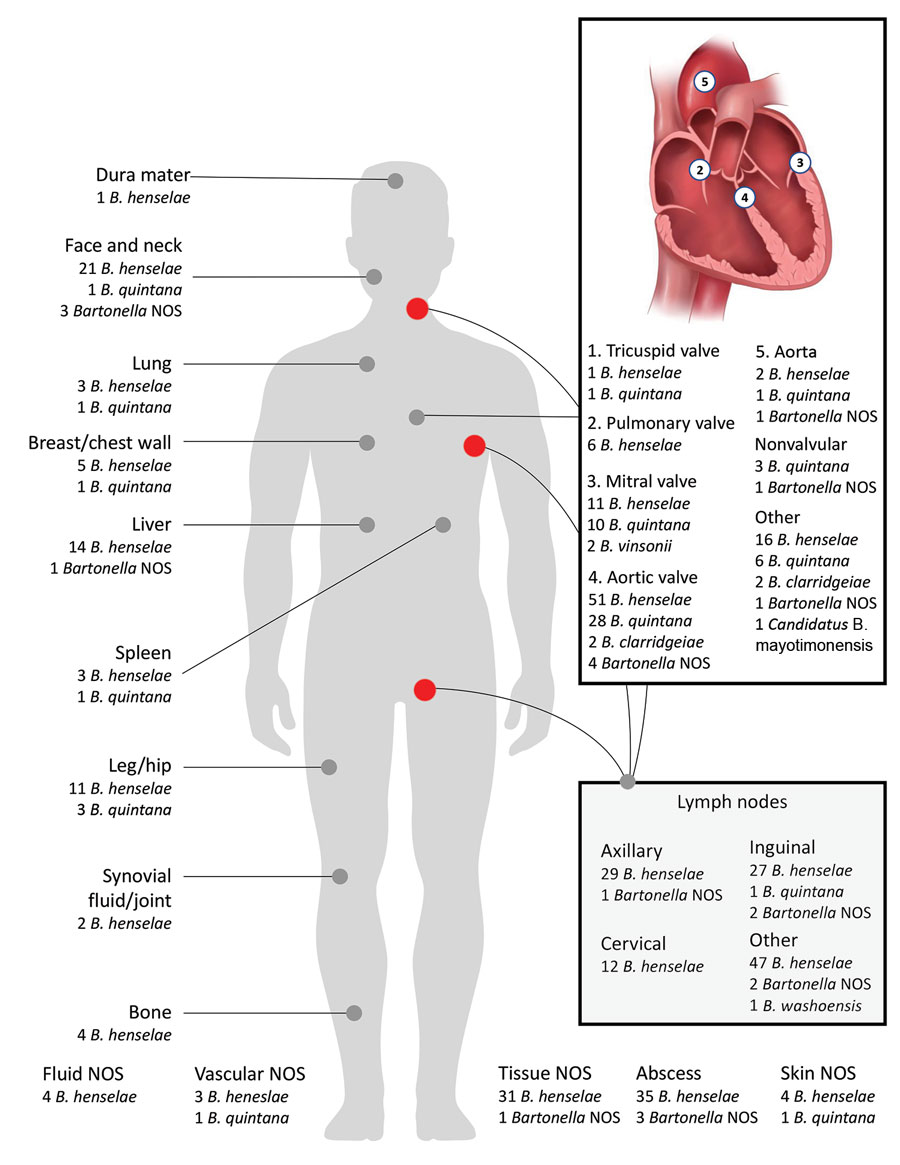Volume 29, Number 3—March 2023
CME ACTIVITY - Synopsis
Bartonella spp. Infections Identified by Molecular Methods, United States
Figure 3

Figure 3. Frequency of Bartonella spp. from different anatomic sites identified during 2003–2021 in study of Bartonella spp. infections identified by molecular methods, United States. Multiple specimens were submitted for 9 patients. We detected Bartonella spp. in both splenic and cardiac specimens from 1 patient, in 2 cardiac specimens each from 7 patients, and in 3 cardiac specimens from 1 patient. If we detected Bartonella spp. on multiple valve specimens, those were included in the total count for all involved valves. For the heart valve inset, other sites are cardiac tissue NOS (n = 18), right ventricular outflow tract conduit (n = 3), pacemaker or implantable cardiac device lead (n = 4), and coronary cusp (n = 1). For the lymph node inset, other sites are lymph node NOS (n = 38), supraclavicular (n = 3), submental (n = 2), mesenteric (n = 1), preauricular (n = 1), submandibular (n = 1), epitrochlear (n = 1), jugular (n = 1), iliac (n = 1), and paraspinal (n = 1). NOS, not otherwise specified.
1These senior authors contributed equally to this article.
David W. McCormick, MD, MPH; Sara L. Rassoulian-Barrett, MS; Daniel R. Hoogestraat, BS, MB(ASCP); Stephen J. Salipante, MD, PhD; Dhruba SenGupta, PhD; Elizabeth A. Dietrich, PhD; Brad T. Cookson, MD, PhD; Grace E. Marx, MD, MPH; Joshua A. Lieberman, MD, PhD.